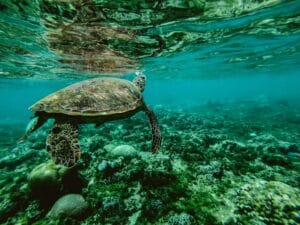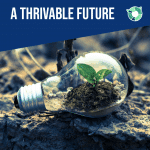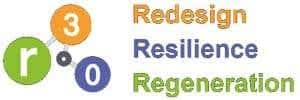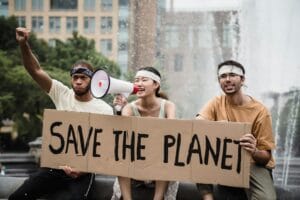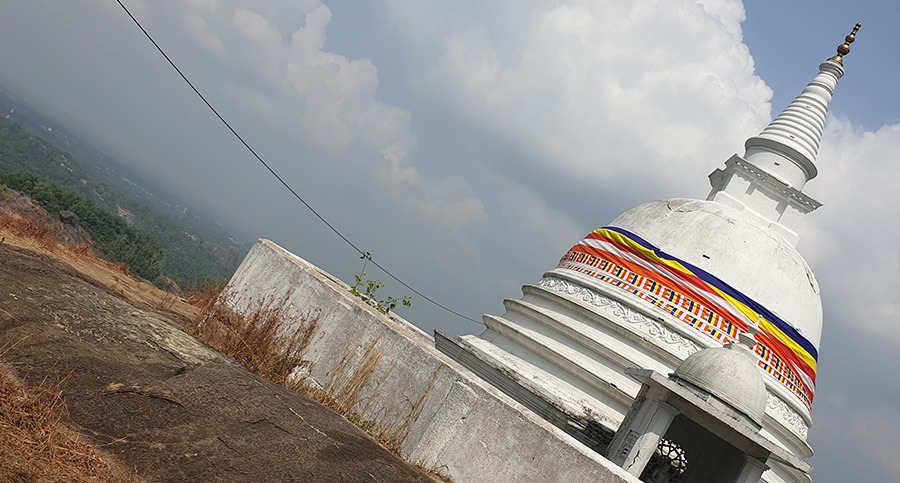Women play a crucial role in agrobiodiversity and are key decision-makers in biodiversity conservation. However, gender blindness and a lack of gender equality persist, limiting conservation and resilience. Recognising the vital role women play in biodiversity conservation and increasing resilience to climate change is important at the international policy level. This increased recognition will lead to new policy approaches to enhance women’s participation in tackling biodiversity loss (Alvarez & Lovera, 2016).
How do we conserve biodiversity?
The loss of biodiversity and degradation of natural resources impacts everyone, regardless of gender, race, age, and level of income. However, the extent to which the loss of biodiversity impacts individuals varies depending upon several key factors, including economic status and gender (UN Women, 2024). The less wealthy and female members of society are more affected by the loss of biodiversity as they are more reliant on the services provided by nature. Increasing gender equity increases biodiversity conservation.
Gender Roles and the Conservation of Biodiversity
Gender must be a prime consideration for equitable and effective biodiversity conservation practices. Ethically, ensuring gender-equitable participation is a cornerstone for respecting, protecting, and promoting human rights (Razavi, 2016). Instrumentally, explicitly including gender can strengthen biodiversity outcomes and allow for better conservation practices.
In India and Nepal, forest conditions such as canopy cover and level of degradation showed greater improvement when forestry executive committees were gender balanced (Leisher et. al, 2016).
Gender considerations have become enshrined in the global environment and development agenda through global commitments, policies, and funding bodies. These include the UN’s Sustainable Development Goals, the Intergovernmental Panel on Climate Change (IPCC), and the Convention on Biological Diversity (CBD). Since 2014, parties to the CBD, IUCN, the Green Climate Fund, and the Global Environment Facility have established working groups. Action plans address gender equity across conservation projects, in professional leadership, and conservation (Conservation International, 2025). This global agenda mandates that biodiversity conservation consider gender in professional practice and activities.
Gender Blindness
The issue of gender blindness remains within conservation efforts. Viewing people as the means of conservation influences whether gender equity is pursued for its intrinsic value or as a means to enhance conservation effectiveness (instrumental value). Thus, it affects how deeply conservation engages with gender. Inequality may lead to perverse outcomes, such as increasing women’s labour or backlash from powerful stakeholders (Lau, 2020).
Cooperation with international agreements and organisations related to biodiversity must take into account women’s participation at all levels. Official coordination mechanisms among different national focal points and relevant authorities must facilitate women’s participation. The CBD’s communications strategy takes into account the role of women in conservation and sustainable use (Alvarez & Lovera, 2016).

Source: African Wildlife Foundation.
Role of Gender in Decision Making for Biodiversity
The decision making processes in biodiversity recognise the different roles that women and men play in managing natural resources. The Green Climate Fund’s Gender Action Plan emphasises women’s participation through every phase of the forestry restoration process. It recognises women as agents of change, leaders in revitalising communities, and the managers of renewable resources. It also calls for gender balance in stakeholder participation and advocates for capacity building on women’s rights issues.
In most parts of Bangladesh, women have only limited participation in public settings, although this is increasing. In the tribal matriarchal societies found in some parts of the country, economically disadvantaged women often sell wood and non-timber products from nearby forests in transient markets (Global Sisters, 2019). Many of these groups have been converted to Christianity and are provided with an education by the church. Allowing them to take part in trading and using these natural resources.
Gender Equity and Agrobiodiversity
Agrobiodiversity is the part of biodiversity involved in agriculture and food production. Only recently has it been recognised that it was first created by women thousands of years ago. The women of the fertile crescent of the Middle East played distinct gender roles, particularly regarding seed saving, selection, and sowing, and are now recognised as the founders of agriculture (Alders, 2024). Agrobiodiversity is a subset of biodiversity and can be defined as the management and direct use of biological species, including all crops, semi domesticated plants, and wild plants. Brookfield further developed a concept of agro-diversity to include agrobiodiversity, including soil, hydrological, and climatic variables, and management diversity. Moreover, this was based on local knowledge and organisational diversity covering socioeconomic aspects. Labour, land tenure, household size, off-farm work, and gender relations are examples of these socioeconomic aspects (Brookfield, 2001).
Protecting agrobiodiversity is vital for food security and environmental conservation. It depends on understanding the links between gender and local knowledge systems (FAO, n.d.). In the development and environment discourse, there is a growing consensus that the incorporation of gendered knowledge and practices is not only necessary and relevant but also essential for sustainable development. Little discussion between feminist and environmental geographers previously occurred, except in the fields of feminist political ecology and environmental justice (Cannon & Dobbin, 2022).
Biodiversity conservation provides a new focus for such dialogue. Until the 1992 Rio Earth Summit, prejudices typecast women in biodiversity as ecologically naïve and of little relevance to sustainable development. However, over the last decade, women embodying environmental knowledge have gained more attention, although ignorance of their role in conservation persists. As noted by UNESCO (2010) the pivotal role of gender in biodiversity merits special consideration in the formulation of conservation policies, strategies, and projects at all levels.
Gender and Biodiversity Conservation
Despite widespread recognition of women’s biodiversity and conservation knowledge passed down through generations, women’s participation in natural resource management and decision-making remains limited. The gendered division of labour has resulted in men and women in many societies having distinct forms of traditional knowledge related to biodiversity. The loss of gendered knowledge affects farming systems and livelihood strategies. The marginalisation of women limits their involvement and potentially results in the loss of their specific knowledge. In Mexico, there is a growing trend of feminisation (Switek, 2024), increasing the contribution to GDP and expanding market opportunities.
moving forward
Women have a critical role to play in conservation. Increased recognition of the role women play in conservation will lead to new policy approaches. These will enhance women’s participation in tackling biodiversity loss and climate change. Such approaches can contribute to climate justice by supporting financial and other forms of support to community-driven, ecosystem-based climate change mitigation and resilience initiatives that foster women’s rights, needs, roles, and aspirations (Alvarez & Lovera, 2016).
Why is it essential that we focus on gender and the conservation of biodiversity?
Gender inequalities are still deeply rooted in every society. Women suffer from a lack of access to decent work and face occupational segregation and gender wage gaps (United Nations, n.d.). Both the Convention on Biodiversity (CBD) and the Paris Agreement refer to women and gender, but only recently has there been a clear recognition of the importance of women’s full and effective participation in national and international policies, plans, and programs by the Parties to the CBD (Alvarez & Lovera, 2016).
Achieving the United Nations’ Sustainable Development Goals (SDGs)
The UN has achieved important results in advancing gender equality, from the establishment of the Commission on the Status of Women, the main global intergovernmental body exclusively dedicated to the promotion of gender equality and the empowerment of women, to the adoption of various landmark agreements such as the Convention on the Elimination of All Forms of Discrimination against Women (CEDAW) and the Beijing Declaration and Platform for Action (United Nations, n.d.). The United Nations’ Sustainable Development Goals (SDGs) are targeted methods to improve global conditions. SDG5: Gender Equality seeks to empower women and balance the gender status. Gender equality has important implications for climate change mitigation and conservation work. SDG13: Climate Action requires urgent action to combat climate change and its impacts. Including women in conversations around biodiversity and conservation contributes to climate action.
Conclusion
Women play a crucial role in agrobiodiversity and are key decision-makers in the conservation of biodiversity. A lack of equality limits the scope of conservation projects and reduces community resilience. Many global organisations have included gender considerations within their policies, but gender must be a consideration at all levels. Women are more affected by a loss of biodiversity and carry traditional knowledge for more sustainable practices. Traditional gender roles and biases still present in many societies, reducing the efficacy of conservation programs. It is imperative that companies and organisations account for the role of women in conservation.
A Thrivable Framework
THRIVE Project is a not-for-profit organisation, tackling the world’s major problems using twelve Foundational Focus Factors (FFFs) to achieve thrivability. THRIVE recognises that the UN’s SDGs fall short of achieving lasting prosperity, therefore THRIVE’s FFFs go beyond sustainability and into thrivability. Thrivability extends beyond sustainability into a world where society and nature flourish. Gender equality is vital for a thriving society, as diverse perspectives bring unique knowledge that enhances conservation efforts. Strong Sustainability, an FFF, concerns ecosystem conservation and how they regenerate without depleting natural resources. This relates to gender equity through enhanced conservation tactics and stronger biodiversity outcomes. Values-Based Innovation, another FFF, considers the values of women in conservation and agrobiodiversity. Conservation and agrobiodiversity achieve greater outcomes with equality among the genders. Integral Thinking, the integration of perspectives from all genders, is also critical for removing gendered stereotypes and creating a more inclusive environment where more effective conservation strategies can be implemented.
To learn more about THRIVE, visit the website. There you will find published articles, whitepapers, presentations, and newsletters full of fascinating content. You can also learn but and register for THRIVE webinars, and workshops. If you want to be involved and work together towards a better future you can look into volunteering at THRIVE! Join today and create a better tomorrow.




